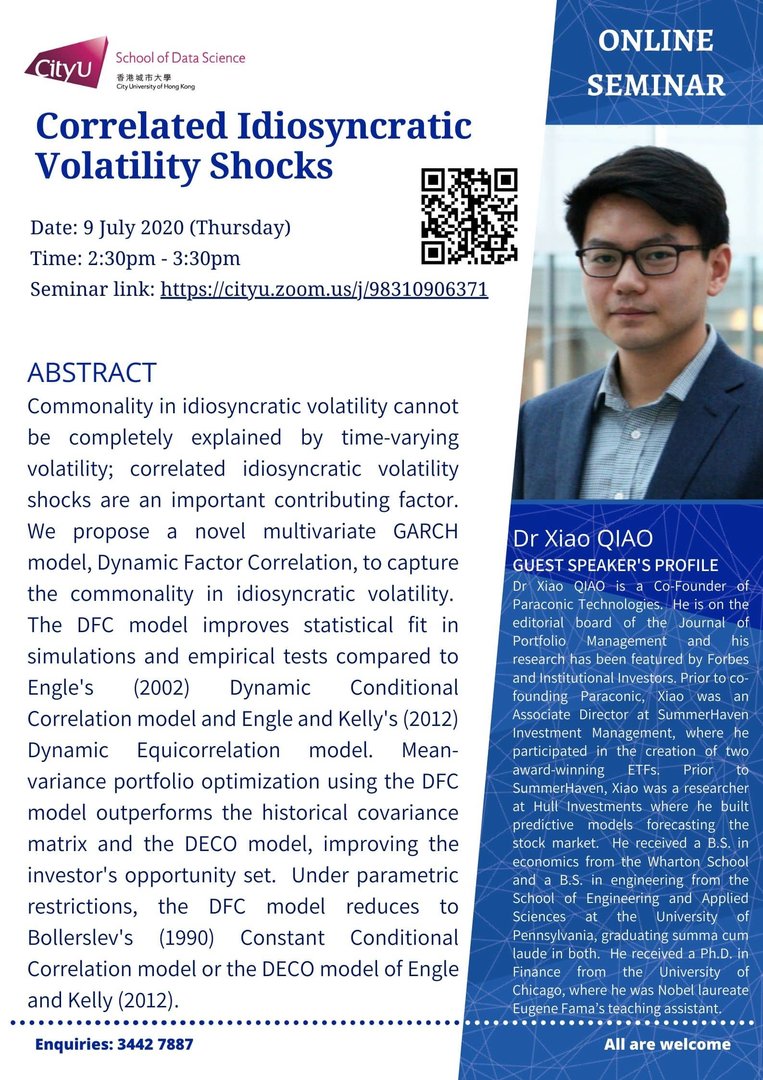
Commonality in idiosyncratic volatility cannot be completely explained by time-varying volatility; correlated idiosyncratic volatility shocks are an important contributing factor. We propose a novel multivariate GARCH model, Dynamic Factor Correlation, to capture the commonality in idiosyncratic volatility. The DFC model improves statistical fit in simulations and empirical tests compared to Engle's (2002) Dynamic Conditional Correlation model and Engle and Kelly's (2012) Dynamic Equicorrelation model. Mean-variance portfolio optimization using the DFC model outperforms the historical covariance matrix and the DECO model, improving the investor's opportunity set. Under parametric restrictions, the DFC model reduces to Bollerslev's (1990) Constant Conditional Correlation model or the DECO model of Engle and Kelly (2012).
Speaker: Dr Xiao QIAO
Date: 9 July 2020 (Thur)
Time: 14:30pm - 15:30pm
Poster: Click here
Latest Seminar
Biography
Xiao is a Co-Founder of Paraconic Technologies. He is on the editorial board of the Journal of Portfolio Management and his research has been featured by Forbes and Institutional Investors. Prior to co-founding Paraconic, Xiao was an Associate Director at SummerHaven Investment Management, where he participated in the creation of two award-winning ETFs. Prior to SummerHaven, Xiao was a researcher at Hull Investments where he built predictive models forecasting the stock market. He received a B.S. in economics from the Wharton School and a B.S. in engineering from the School of Engineering and Applied Sciences at the University of Pennsylvania, graduating summa cum laude in both. He received a Ph.D. in Finance from the University of Chicago, where he was Nobel laureate Eugene Fama’s teaching assistant.